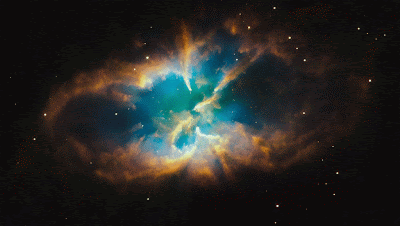NGC 2818

Space is an interest of mine. This recently released photo from the Hubble Space Telescope is a speechless beauty. Compare this image with a previous earth-bound telescope image and you'll see why the Hubble project has been such a enlightened expression of humankind.
I have little background light around my land. We are surrounded by many acres on all sides of mostly woods and pastures. Within, say, a quarter mile in either direction there are only a half dozen houses. The nearest subdivision development is about a half mile away from my house to the north. In every other direction from my house there is no development at all but for sporadic houses separated by thousands of acres of woods and fields. This makes the sky remarkably bright and clear where I live and many nights I stand outside gazing at planets and constellations. What ever else there may be, our universe is a marvel of gas and light amidst unfathomable darkness. And silence.
NGC 2818 is the death of light, the after-star, the slow, constant, spectacle of an enormous thermonuclear explosion in our distant past, white dwarf debris expanding outward through millennium. So slow it seems not to move at all in the span of a human being.
The same image with some technical data superimposed can be found here. NGC 2818 is so far away we cannot see it as it is today. We can only see it as it was 10,000 years ago. Tonight we see something as it was before human beings had written language. NCG 2818 is almost six light-years across. So the (planetary) nebulae is truly enormous. By comparison, our entire solar system is 0.000612401142 light years in size. You would need 10,000 solar systems to stretch across the breadth of the nebulae.

Comments